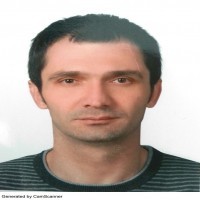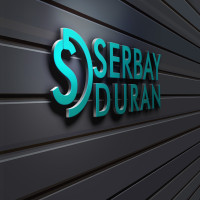Issue Editorial Board






Aim & Scope
Adıyaman University Journal of Science (ADYU J SCI) is peer reviewed journal which has been published since 2011 by Adıyaman University Journal of Science is published 2 times a year and accepts English language original research manuscripts in the field of biology, chemistry, mathematics and physics. Contribution is open to researchers of all nationalities.
The ADYU J SCI aims to publish only Full Research Articles.
Review Article, Technical Note, Short Reports, Book Review, Letter to Editor etc. are not accepted for evaluation.
Author Guidelines
- 1. Manuscript Submission GuidelinesAdıyaman University Journal of Science (ADYU J SCI) is the official publication of Adıyaman University. ADYU J SCI is a peer reviewed international journal which has been published biannually since 2011. The journal publishes qualified and original research articles in the fields of Biology, Chemistry, Mathematics and Physics. Contribution is open to researchers of all nationalities.Authors submitting articles to our journal have accepted the originality checks that should be done during the referee review and printing processes. Manuscripts are accepted for reviewing on the understanding that they have not been published and are not going to be considered for publication elsewhere. Authors should certify that neither the manuscript nor its main contents have already been published or submitted for publication in another journal. The articles only written in English are being accepted since 2016. The Microsoft Word (*.doc, *.docx) template is accepted for our journal. Article template can be accessed from the following links:Microsoft Word template: Click to downloadSince articles are published online, manuscripts that do not comply with the following written rules cannot be published. The manuscripts which do not conform to the format of our journal formally are rejected by the editor-in-chief before being evaluated.The submission of manuscripts that will be evaluated in our journal can only send through the DergiPark system. The webpage of ADYU J SCI in the DergiPark system can be accessed via the link given below:https://dergipark.org.tr/tr/pub/adyujsciThe author(s) who wish to submit an article to our journal must check and fulfill each step in the “Submission Checklist” along with the spelling rules. The responsibility for the accuracy of all information contained in the article belongs to the author(s). Applications made by anyone other than one of the authors will not be accepted. Only one article can be published by an author in the same issue. In articles accepted for publication in our journal, compliance with research and publication ethics is essential. “Manuscript Submission and Copyright Transfer Form” and " Conflicts Of Interest Declaration and Author Agreement Form" must be completed and signed by all authors.Manuscript Submission and Copyright Transfer Form: Click to downloadConflicts Of Interest Declaration and Author Agreement Form: Click to downloadFurthermore the similarity report using iThenticate™ plagiarism detection software should be generated by the corresponding author. Similarity report of the submitted manuscript in PDF format should pass the following filtering criteria by using and iThenticate™ program:
- Excluding abstract,
- Excluding references,
- Excluding words with overlap of less than 7 words,
- Maximum 5% similarity rate with a single source,
- and the similarity rate should not exceed 25%.
It is important that the similarity report should be uploaded and submitted during manuscript submission process. The use of someone else's ideas or words in their original form or slightly changed without a proper citation is considered plagiarism and will not be tolerated. Even if a citation is given, if quotation marks are not placed around words taken directly from another author’s work, the author is still guilty of plagiarism. Reuse of the author’s own previously published words, with or without a citation, is regarded as self-plagiarism.“Ethics Committee Permission Certificate” should be attached to the manuscript in the studies that use animals or harmful substances.2. Manuscript Evaluation ProcessThe articles submitted to ADYU J SCI are primarily evaluated formally by the section editor to be directed by the editor-in-chief, based on the subject title and keywords. Candidate publications that do not have a “Manuscript Submission and Copyright Transfer Form” or those that are incomplete and exceed the limits of similarity report are not taken into pre-review. Manuscripts that are not prepared in accordance with ADYU J SCI journal writing rules are sent back to the author for correction.The manuscripts prepared in accordance with the ADYU J SCI format are directed by the editor-in-chief of the journal to the relevant section editor for the review process.All articles undergo a double-blind peer-reviewed process. For this purpose, expert referees are appointed to evaluate the article. The author(s) are obliged to make corrections written in the referee’s report before publication and arrange the article according to the journal’s writing template. In case the requested corrections are not carried out within the period specified by the author(s) in accordance with the referee reports, the article may be rejected. After manuscript has been accepted for publication, i.e. after referee-recommended revisions are completed, the author will not be permitted to make any changes that constitute departures from the manuscript that was accepted by the editor. Before publication, the galley proofs are always sent to the authors for corrections. Mistakes or omissions that occur due to some negligence on our part during final printing will be rectified in an errata section in a later issue. This does not include those errors left uncorrected by the author in the galley proof.Journal writing rules are also print format. Therefore, spelling rules should be applied carefully by the author(s). The Journal reserves the right to make appropriate corrections regarding language and spelling where it deems necessary. Accepted articles are arranged for publication and then submitted to the journal in their final form. Finally, accepted articles are ranked in order to be published in the appropriate volume and number.3. Preparation of ManuscriptThe manuscript should be in A4 format, Times New Roman font, justified and 11 font size. Page numbers should be in Times New Roman font, 11 font size and given at the bottom and in the middle of the page. A space must be left after the punctuation marks (period, comma, semicolon, etc.). The line spacing should be set to (1.5). There should not be any line spacing between each paragraph and Tab key should not be used at the beginning of the paragraph.· Title (English and Turkish) should be written in Times New Roman 12 font size, bold, single line spaced and centered. The first letter of each word in the titles should be written in capital letters, and automatic title styles should not be used.· Author's name or names should be written after the English title, Times New Roman, 11 pt, without specifying the academic title, the first letter of the name and all letters of surname in capital letters. In case of multiple authors, a comma between them should be used. The superscript in the name of the corresponding author should be the star symbol.· Author's address (s) and ORCID number information should be written in Times New Roman, 10 pt and italic, with no spaces just below the author’s name. ORCID information of all authors should be provided.· Abstract and Turkish Abstract (Öz) should be written after the address(s), the word Abstract should be written in Times New Roman font, 11 pt, bold. The body text of the abstract should be written in Times New Roman font, 11 pt, justified, 1.5 line spacing and using Tab key indent. The abstract should not exceed 300 words.· Keywords/Anahtar Kelimeler should be written in Times New Roman, 11 pt, single line spacing with one line space below the English Abstract/Turkish Abstract. At least 3 and maximum 6 keywords should be given, “Keywords/Anahtar Kelimeler” should be written in bold and the other words should not be bold. The first letter of each word should be capitalized with a semicolon. Turkish keywords should be written according to the ranking given in the English keywords, the words should not be bold.· Main headings should be numbered consecutively (1. Introduction, 2. Material and Methods, etc.). All titles should be Times New Roman, 12 pt bold and the first letter of each word should be capitalized. There should be 1 line space before and after the main headings. Subheadings should be numbered in accordance with the main heading number. All subtitles should be written in Times New Roman, 11 pt, bold, with the first letter of each word capitalized (2.1. Experimental Setup, 2.2. Preparation of Substances, etc.). A single line space must be left before and after the subtitles. When writing titles, formats such as automatic title style, bullets, multi-level list should not be used, but should be written in plain text.· Figures, illustrations, and photographs should be centered so that they do not exceed the page limits, and should be clear and legible. It should be numbered in sequence. Figures and names should be placed under the figure with the lower left edge of the figure and only the first letter of the first word should be capitalized. The figures should either be drawn with a drawing program or scanned with at least width of 16 cm and at least resolution of 300 dpi. The size of the text and numbers in the graphics, pictures and text boxes shown as figures should not be less than the size of a 9-point font written in Times New Roman character in the article. There should be one line space before the figure, before and after the figure name. Figures should be cited in the text before the figure. In figure writings (in the text and under the related figures) the automatic figure writing style should not be used, but should be written in plain text. If the figures, pictures, photographs and tables used in the manuscript are quoted from another study, the author must have the copyright permission obtained from the right holder.· Tables should be centered so as not to exceed the page limits. It should be numbered in sequence. Table number and names should be written with a single line space at the top left of the table so that only the first letter of the first word is capitalized. When writing the table name, one line should be left at the top and bottom and one line should be left after the table. Tables should be cited in the text before the table. Numbers and texts in the table rows and columns should be written in Times New Roman 11 pt. However, in case of necessity, the font size can be reduced to at least 9 points without exceeding the text limits. Automatic typeface style should not be used in table writings (in the text and in the related table), and should be written in plain text.· Equations and symbols should be written left-aligned with the equation editor in Word or MathType editor, and the equations should be numbered consecutively in brackets. If the article contains a large number of symbols or if the symbols in the article need to be explained, in accordance with the international standard, the symbols should be italicized in Times New Roman 11 pt before the references. A decimal point should be used in the article, and a comma should be used when separating thousands.· References should be numbered as ([1], [2], [3-6], etc.) in the text. Each reference should be cited in its original language. References should be arranged as firstly seen in the text and should not be arranged alphabetically. It is important that the author(s) do not cite their own articles unless deemed necessary. References should be written according to the following guidelines:3.1. Preparation of References3.1.1. National and International Articles[1] Aburjai, T., Natsheh, F.M., Plants used in cosmetics, Phytotherapy Research, 17(9), 987-1000, 2003.[2] Wang, X., Zhao, M., Su, G., Cai, M., Zhou, C., Huang, J., Lin, L., The antioxidant activities and the xanthine oxidase inhibition effects of walnut (Juglans regia L.) fruit, stem and leaf, Food Science and Technology, 50(1), 233-239, 2015.[3] Cosmulescu, S., Trandafir, I., Nour, V., Seasonal variation of the main individual phenolics and juglone in walnut (Juglans regia) leaves, Pharmaceutical Biology, 52(5), 575-580, 2013.3.1.2. Books[1] Hem, J.D., Study and interpretation of the chemical characteristics of natural waters: USGS Professional Paper, 2254, US Gov. Print. Office, 263p. 1989.[2] Coghill, A.M, Garson, L. eds., The ACS Style Guide. New York: Oxford University Press, Inc. and The American Chemical Society, 3 ed., 2006.3.1.3. Theses[1] Dirac, P.A.M (1926). Quatum mechanics, Ph.D. Dissertation, St. John’s College, Cambridge, USA.3.1.4. Proceedings[1] Rychlewski, J., On the detectability of constitutive laws in solid mechanics and physics, in Proceedings of the Symposium on Trends in Application of Mathematics to Mechanics, pp. 185–191, 2000.3.1.5. Internet sources[1] Satalkar, B. (2010, July 15). Water aerobics. Retrieved from http://www.buzzle.com
Ethical Principles and Publication Policy
Ethics Rules and Publication Policy
The publication process at Adıyaman University Journal of Science (ADYU J SCI) is the basis of the improvement and dissemination of information objectively and respectfully. Therefore, the procedures in this process improve the quality of the studies. Peer-reviewed studies are the ones that support and materialize the scientific method. At this point, it is of utmost importance that all parties included in the publication process (authors, readers and researchers, publisher, reviewers and editors) comply with the standards of ethical considerations. Adıyaman University Journal of Science (ADYU J SCI) expects all parties to hold the following ethical responsibilities.
The following ethical duties and responsibilities are written in the light of the guide and policies made by Committee on Publication Ethics (COPE). The publication of an article in a peer-reviewed journal is an essential building block in the development of a coherent and respected network of knowledge. It is a direct reflection of the quality of the work of the authors and the institutions that support them. Peer-reviewed articles support and embody the scientific method. It is therefore important to agree upon standards of expected ethical behavior for all parties involved in the act of publishing: the author, the journal editor, the peer reviewer, and the publisher.
1. Publication and authorship:
List of references, financial support;
No plagiarism, no fraudulent data;
Forbidden to publish same research in more than one journal.
2. Author’s responsibilities:
Authors obliged to participate in peer review process;
All authors have significantly contributed to the research;
Statement that all data in article are real and authentic;
All authors are obliged to provide retractions or corrections of mistakes.
3. Peer review / responsibility for the reviewers:
Judgements should be objective;
Reviewers should have no conflict of interest with respect to the research, the authors and/or the research funders;
Reviewers should point out relevant published work which is not yet cited;
Reviewed articles should be treated confidentially.
4. Editorial responsibilities:
Editors have complete responsibility and authority to reject/accept an article;
Editors should have no conflict of interest with respect to articles they reject/accept;
Only accept a paper when reasonably certain;
When errors are found, promote publication of correction or retraction;
Preserve anonymity of reviewers.
No plagiarism, no fraudulent data.
5. Publishing ethics issues
Monitoring/safeguarding publishing ethics by editorial board;
Guidelines for retracting articles;
Maintain the integrity of the academic record;
Preclude business needs from compromising intellectual and ethical standards;
Always be willing to publish corrections, clarifications, retractions and apologies when needed.
Duties of the Publisher
Adıyaman University Journal of Science (ADYU J SCI) is committed to ensure that commercial revenue has no impact or influence on editorial decisions. In addition, ADYU J SCI will assist in communications with other journals and/or publishers where this is useful to editors. Finally, we are working closely with other publishers and industry associations to set standards for best practices on ethical matters, errors and retractions–and are prepared to provide specialized legal review and counsel if necessary.
Plagiarism Detection
Adıyaman University Journal of Science (ADYU J SCI) uses double-blind review fulfilled by at least two reviewers. In addition, all articles are checked by means of a program (Ithenticate) in order to confirm they are not published before and avoid plagiarism.
The peer review process is at the heart of the success of scientific publishing. As part of our commitment to the protection and enhancement of the peer review process, ADYU J SCI has an obligation to assist the scientific community in all aspects of publishing ethics, especially in cases of (suspected) duplicate submission or plagiarism.
When a reader discovers a significant error or inaccuracy in a paper published in Adıyaman University Journal of Science (ADYU J SCI) or have any other complaint about editorial content (plagiarism, duplicate papers, etc.), he/she should make a complaint by e-mail to: adyusci@gmail.com. We welcome complaints as they provide an opportunity for improvement, and we aim to respond quickly and constructively.
Price Policy
Adıyaman University Journal of Science views open-access to academic publications and research as an immutable part of academic endeavor. The journal does not charge for submission, handling, processing, and publication of manuscripts.
...


